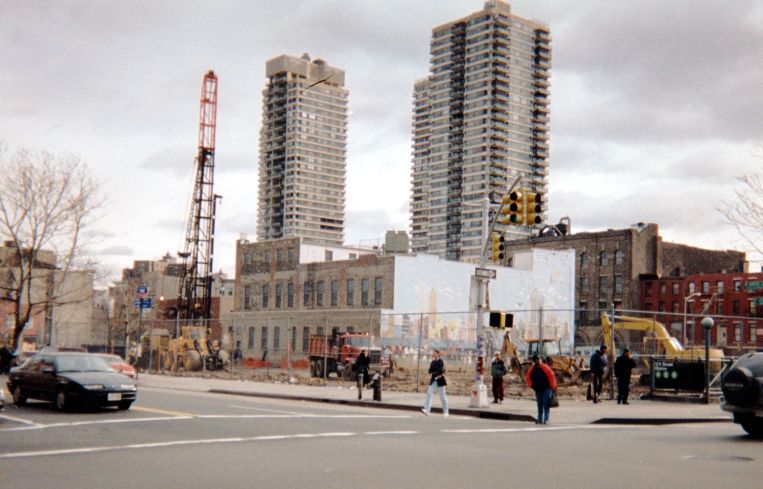In East Harlem, the Case for Brick-and-Mortar Diversity and Inclusion
By G. Lamont Blackstone September 4, 2024 6:30 am
reprints
Criticisms of diversity, equity & inclusion (DEI) are likely to explode during this rancorous 2024 political season. But, as I have suggested in past columns, that diversity is more expansive as a concept than many critics think. For the commercial real estate sector, diversity is the Swiss Army knife of managerial thinking. It has multiple applications for different contexts.
Accordingly, I suggest that DEI’s perspective also extends to the built environment that developers shape. As such, diversity means whether historically marginalized neighborhoods have complementary land uses and properties included in the development decisions of government, developers and enterprises.
I witnessed this aspect of DEI in the 1990s. I was then part of the team that developed the Harlem Pathmark supermarket in East Harlem, a core neighborhood of Upper Manhattan and one of the nation’s premier Latinx communities. That store had opened as the largest supermarket in all of Manhattan and heralded the promise of inner-city retailing. Consequently, East Harlem became an inspiration for other urban neighborhoods nationally that were nurturing the sprouts of revitalization. Yet, for such neighborhoods to grow, urban planning perspectives must encompass diverse components of the built environment.
Housing is the ever-present need in post-millennial America. But holistic neighborhoods are defined not only by quality housing, but by commercial uses. Healthy communities have cultural institutions; East Harlem is blessed with a Latin-themed museum and is within three subway stops of the Met and the Guggenheim. Vibrant neighborhoods have medical facilities; East Harlem has Mount Sinai, a world-class hospital, as well as the New York Proton Center, a state-of-the-art cancer treatment facility. Revitalizing neighborhoods also have quality retail outlets to service residents.

East Harlem had the 50,000-square-foot Pathmark store until it closed to accommodate a larger planned development. But it inevitably was replaced on a nearby site by a modern supermarket from another chain.
But what East Harlem does not have — and what it can support — is a hotel catering to the tourist draw of Upper Manhattan. Historically, the default thinking in development circles has been that certain CRE asset classes work only in certain districts of municipalities. That often has resulted in a land use caste system — one differentiating “have-not neighborhoods” from the privileged “haves.” And that is why the Pathmark project defied the groupthink of the 1990s: East Harlem was assumed capable of supporting only affordable housing and its health care facilities.
However, DEI thinking is occasionally woven into development plans with land uses previously considered unthinkable. This brick-and-mortar diversity perspective views neighborhoods strategically — with a long-term view. Thus, the East Harlem Pathmark was made possible by ingenious dealmaking facilitated by that era’s New York City Economic Development Corporation. Its professionals worked in tandem with an ethnically diverse project team comprising the development corporation of a prominent Black church and CRE practitioners.
The ripple effects of this brick-and-mortar diversity and inclusion (shall we christen it BMDI?) now include a 10-story life sciences lab facility. That separate East Harlem project serves as testament to the conviction that inner-city neighborhoods should not be pigeonholed as capable of supporting only affordable housing.
There is potentially more development on the horizon. Tourist and other visitor traffic has increased in Upper Manhattan — including from patients and medical professionals visiting the New York Proton Center. However, this growing economic activity has not been matched with adequate hotel room inventory — notwithstanding the spectacular opening of the Marriott Renaissance in Central Harlem.
Consider that Upper Manhattan has a population of more than 500,000 people. That’s a community larger than the populations of Miami or Atlanta. Upper Manhattan also hosts its own iconic museums, theaters and diverse eateries, as well as colleges such as Columbia, Touro University and the City University of New York. However, there are only four hotels in the area — none of which are in East Harlem, the neighborhood most accessible to LaGuardia Airport.
East Harlem obviously is not Miami. But the city of Miami easily has several thousand hotel rooms. So, it’s not a stretch to think East Harlem could support 200. That is why the city should encourage the attraction to the district of another hotel flag. That would also build the critical mass for a lodging sector submarket in Upper Manhattan. For hoteliers, there is usually strength in numbers.
The city’s housing crisis will understandably shift attention to the need for more affordable units. But DEI — in its urban planning iterations — requires that ignored neighborhoods be given fair opportunity for drivers of commercial real estate growth.
G. Lamont Blackstone is a commercial real estate consultant and urban redevelopment specialist who is also the former board chair of the national diversity initiative Project REAP. He was also the project manager for the institutional equity investor behind the Harlem Pathmark supercenter development in the 1990s.


